2019 BMW M2 Competition vs. 2019 Chevrolet Camaro SS 1LE: Comparison Test
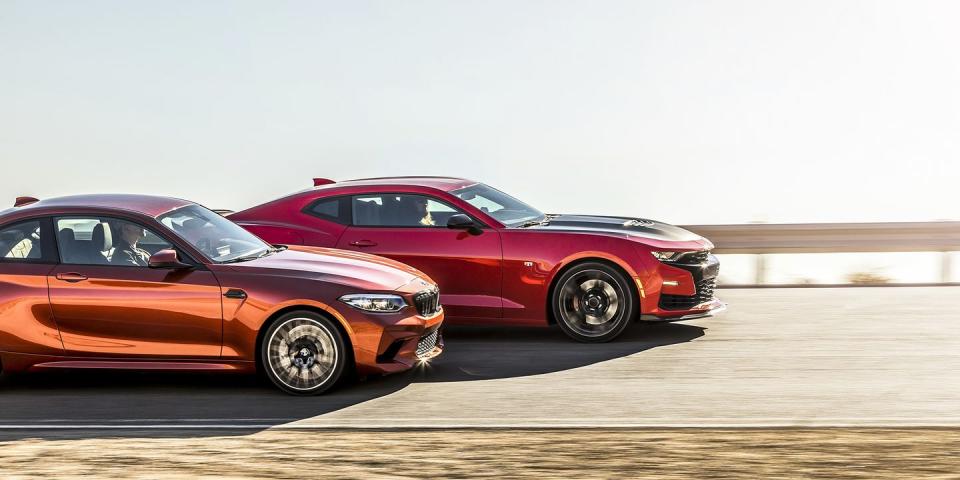
BIOLOGISTS CALL IT “CONVERGENT EVOLUTION.” Two creatures, despite having different ancestors, end up looking similar. It explains dolphins and sharks, which strongly resemble each other in shape, proportion, and external features. Yet one is a warm-blooded mammal that breathes air and recognizes faces and plays in the ocean with its friends. The other is a blank-minded, cold-blooded killing machine from the nightmare seas of prehistory.
This story originally appeared in the November, 2018 issue of R&T.
The dolphin and the shark look similar because they adapted to the same general set of environmental conditions. The same can be said of the BMW M2 Competition and Chevrolet Camaro SS 1LE.
Somewhere along the way-maybe as early as 1984, when the 5.0 HO Z28 exceeded the raw cornering grip of the bespoilered 325es, or three decades later, when the fifth-generation Z/28 declared war on the M3-BMW and Chevrolet began pursuing the same group of customers, particularly in the niche market of “track specials.” Any biologist could tell you what happened next.
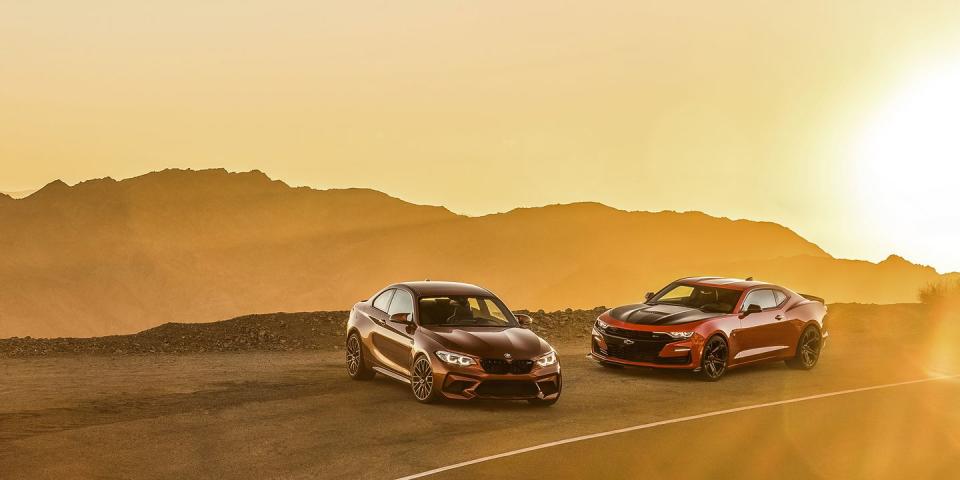
Call the M2 a dolphin: sleek, flamesurfaced, with proportions both economical and awkward. The Camaro SS 1LE is a great white shark: big, bold, aggressive, with a new-for-2019 face that frightens children. The mission of both cars is virtually the same: deliver massive street credibility and track capability in a daily-driver coupe with a back seat, and do it for sub-Corvette (or sub-M4) money.
A glance at the two cars idling menacingly in pit lane at the Thermal Club’s South Palm Circuit reveals a half dozen commonalities: Multipiston, fixed-caliper brakes on all corners. Staggered-setup tires, 20 millimeters wider in back. Plenty of grillwork to keep the engine cool in long sessions. Stability-control programs designed to flatter drivers by safely blunting the edges of the performance envelope. A choice of traditionalist-pleasing six-speed manual or quick-shifting automatic transmission. Last but not least, we have 400-plus-hp engines with appetites for 12-second quarter-miles. This is convergent evolution at its most obvious. Which means it’s time for survival of the fittest.
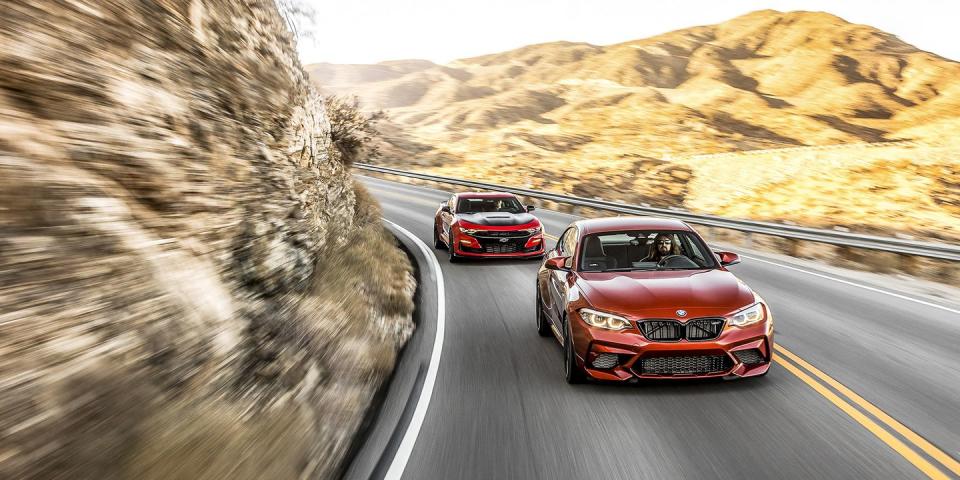
IT IS THE KIND OF HEAT THAT BREAKS both man and machine. Not even noon yet on this private road course outside Palm Springs, California, and both cars are reporting ambient temperatures of 105 degrees in the shade. The track surface is hotter still. Staff photographer Marc Urbano comes back from a scouting session with a pained expression. “I can’t even kneel on the ground to shoot.” There is no evidence of standing water anywhere the eye can see. A few spilled drops from a drink bottle vanish from the ground like they’d hit a frying pan. A miniature tornado of sand arises in an instant and soils the surface of the fast final turn as it sweeps toward us, adding another element of uncertainty to a situation that didn’t need it. I think of T. S. Eliot’s famous quote: “I will show you fear in a handful of dust.”
From the first corner, however, two things are apparent. First: The SS 1LE is absolutely untroubled by the scorching track, the overheated air, or the fine layer of traction-robbing sand that scatters in its wake, forming three-dimensional aerodynamic hieroglyphs on the vertical surfaces of its back bumper. Second: The competition should be very worried, indeed.
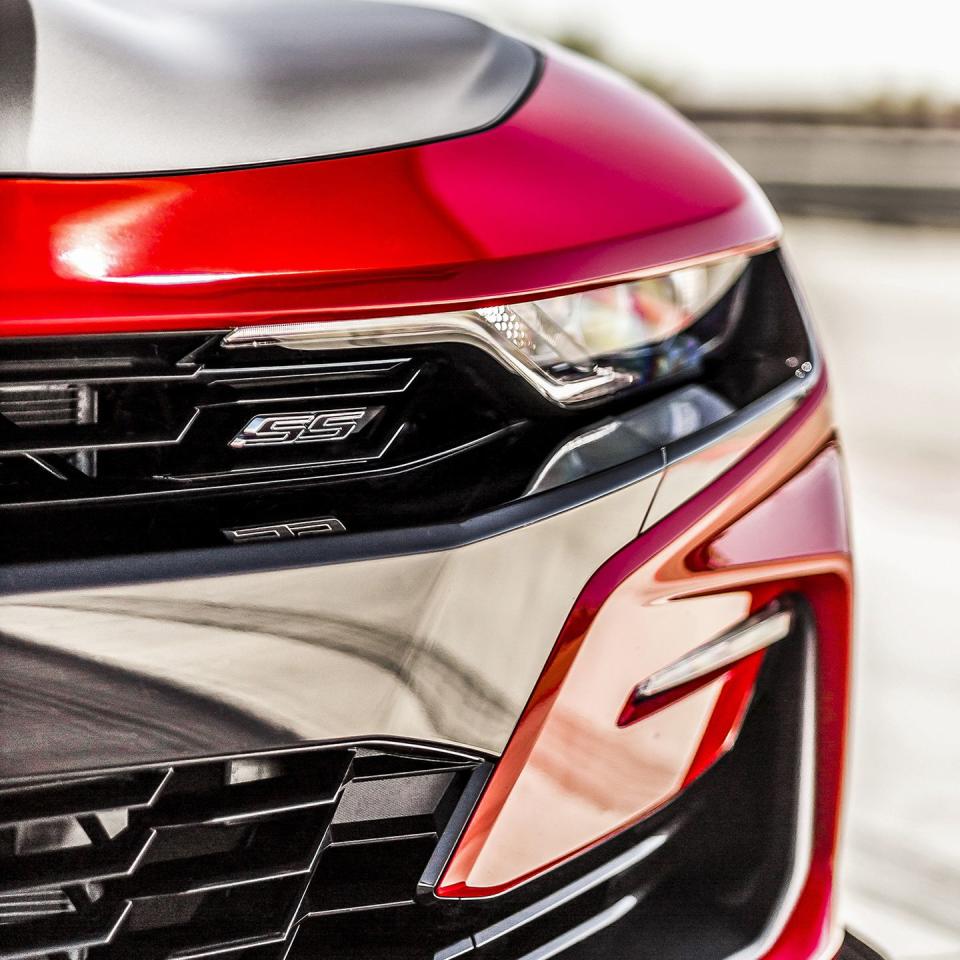
Four years ago, prototype-racing champion Alex Gurney drove the 2014 Camaro Z/28 around this 1.8-mile course for us. Then, as now, we considered that 505-hp, spool-valve-damped, carbon ceramic-braked racetrack special to be nothing short of a revolution in pony-car handling. His time: 1:26.1.
The sixth-generation Camaro has a better, more refined platform, but the spec is modest in comparison: cooking grade 455-hp LT1 engine, Magnetic Ride suspension, Goodyear Eagle F1 SuperCar 3 tires, steel brakes. The track is 20 degrees hotter, and the surface is not as clean as it was back then.
Yet despite these nontrivial handicaps, the 1LE SS gets down to 1:26.6. Perhaps it’s because the Camaro is a natural middleweight, scaling at 3780 pounds-even with a full complement of equipment, including heated and cooled seats-against the 3851-pound Z/28, which jettisoned everything from air-conditioning to trunk lining.
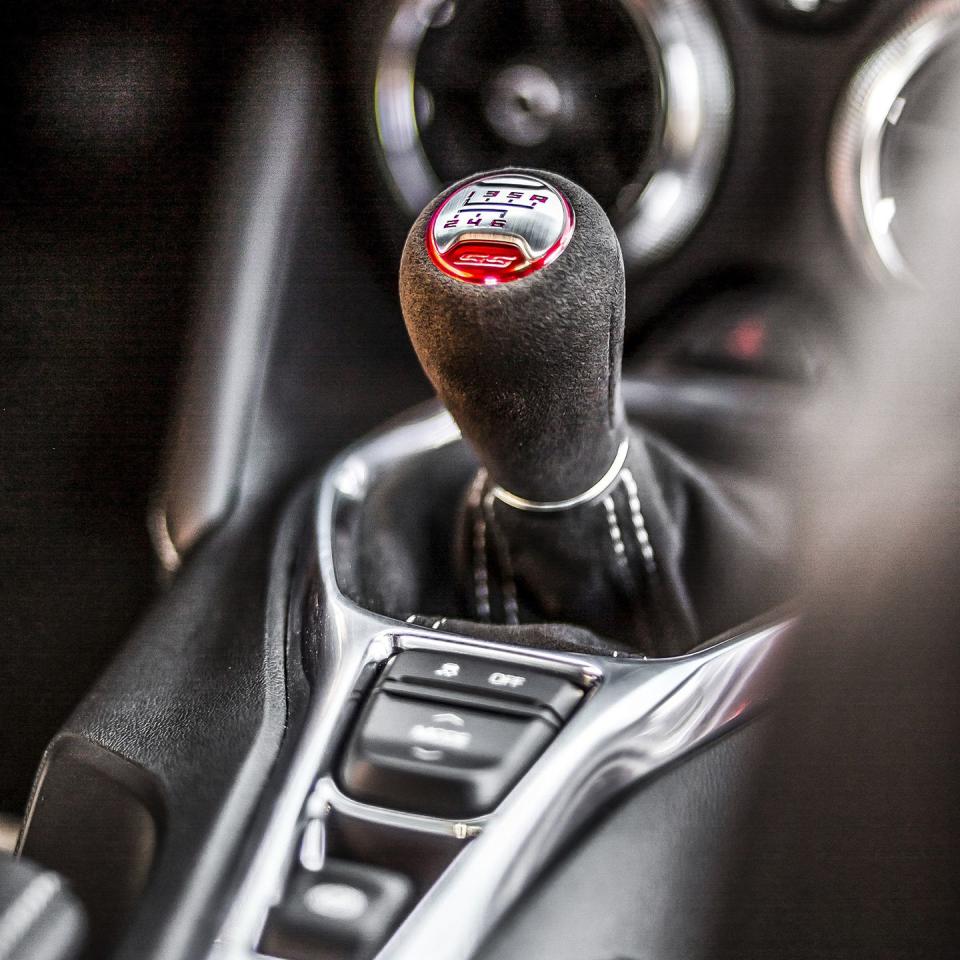
It also speaks to the car’s balance and tuning. This is still a big car with limited visibility from the Sarlacc pit of its curiously low driver’s seat, but that shortcoming is more than offset by the feedback available to fingertips and toes at all times. More than any street car of late, the Camaro communicates the point of ABS activation with clear, unambiguous vibrations of the appropriately boosted center pedal.
The steering manages that old 993-era Porsche trick of indicating tire slip through fine-grained motions at the rim despite having a relatively high assistance level. This is how it should be. Give us power steering or don’t, but please refrain from faking feedback by increasing the effort required.
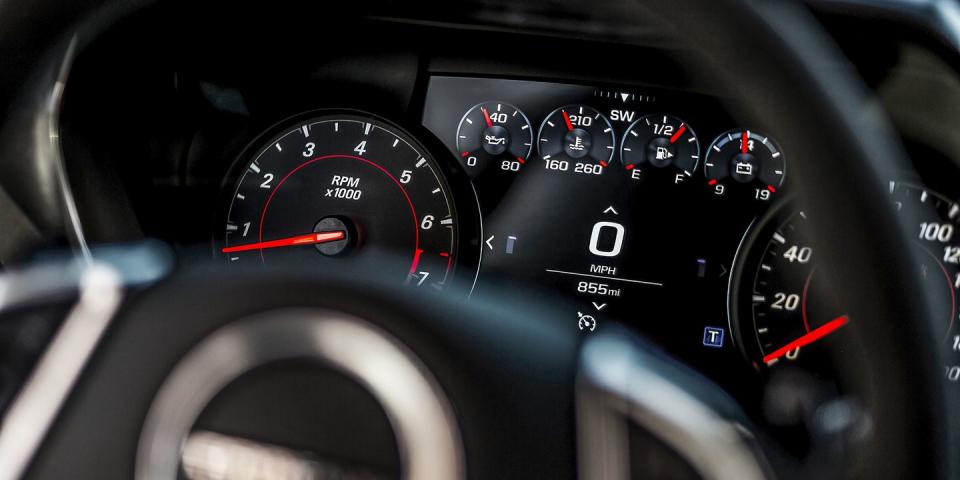
The Thermal Club takes its curbing very seriously, but the 1LE swallows it with minimal disruption in a manner not unreminiscent of the best Penske or Moton racing fitments. It’s not necessary to turn off stability control, the Track setting provides a net wide enough for all reasonable slip angles. The shifter is positive without being notchy; after the first two corners, it simply disappears. The days of “rock crusher” transmissions in big-power Camaros are as dead as Augustus Caesar.
If there is a fly in the ointment, it’s the LT1 engine. Neither as strong nor as quick-revving as the titanium-conrod LS7 in the Z/28, this direct-injected V-8 occasionally feels just a hair slow to respond, particularly midcorner, where a quicker activation of the throttle plate might help to rotate a snowplow-style corner entry mistake back into acceptability. Most of the time, however, the LT1’s relatively relaxed approach to the job is an asset, because the Camaro stays settled while you’re exploring the edge of the tires in fast corners. It’s reminiscent of the way the straight-six in the E46 M3 used to deliver better-than-adequate power in granular and controllable fashion.
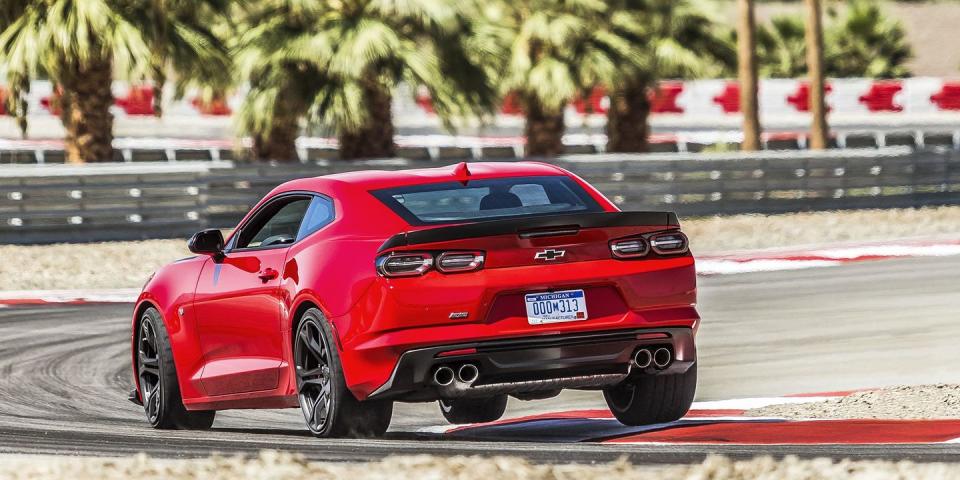
Truthfully, there’s more than a little mid-to-late Nineties BMW in the 1LE’s general demeanor, right down to the placidity with which it accepts a slightly tail-out approach to every corner exit. Sure, the sheer visual mass of the black-wrapped bonnet out there will feel a bit disconcerting to old BMW CCA track rats, but the Z4 M Coupe was also a bit large of nose and we never held that against it. If you’ve long been a fan of track-prepped German coupes, then Chevrolet now has just the car for you.
If, on the other hand, you live and breathe muscle cars, step right up, my friend, because the BMW M2 Competition is the purest example of the breed since John Z. DeLorean stuffed a big-block in the GTO. No sane person ever accused the original M2 of being short on power; to the contrary, the little coupe’s fierce desire to roast its tires in the mid-corner was why we gave the nod to its better balanced 228i sibling the last time we brought small Bimmers to the Thermal Club. This did not stop BMW from evolving M2 into M2 Competition via the installation of the M4’s twin-turbo 3.0-liter inline-six boasting 405 hp. That’s 39 ponies down on the M4 Competition. Where did they go? Most likely the same magical farm where you’ll find the 40 horses that went missing when the LS1 engine went from the Corvette to the Camaro two decades ago. We call that place “Marketing Ranch.”
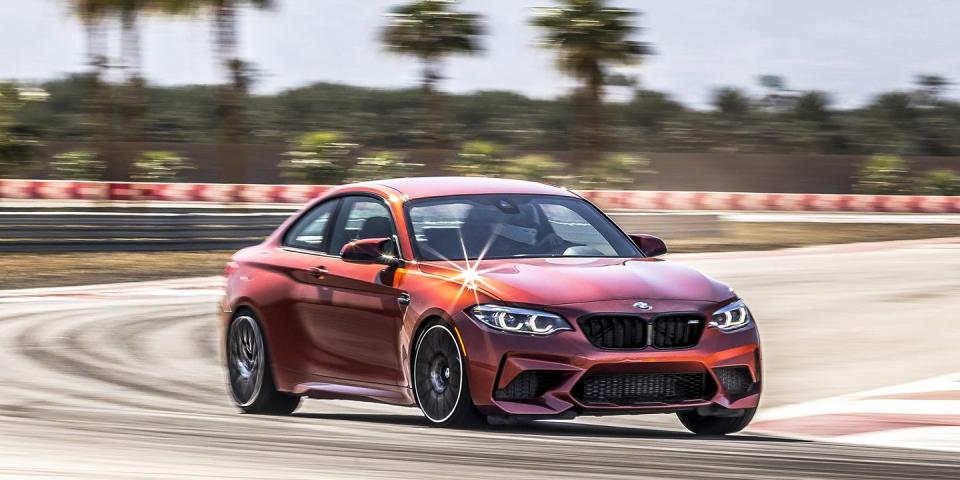
When road test editor Kyle Kinard and I try a couple of “roll races” on Thermal’s back straight, the muscle-car BMW smokes the fair-and-balanced Chevy every time. True, our M2 Comp tester has the seven-speed dualclutch gearbox, but that’s not why. Rather, it’s the tsunami of torque produced by the S55 straight-six, coupled with a weight advantage. Every few hundred feet, the BMW pulls out another car-length.
The lap-timer data tells the same story: The BMW is running 4 to 5 mph slower through every turn, but effortlessly making up that gap on the straights, and then some. At the brake point for Turn 1, it’s doing 119 mph against the Camaro’s 115 mph. Unfortunately for the M2, this ain’t no quarter-mile race. It’s facing a severe disadvantage when it comes to running shoes, pitting 19-inch Michelin Pilot Super Sports in 245 and 265 width against the Camaro’s Goodyear F1 SuperCar 3 rubber in 285 and 305. To paraphrase a movie villain, the Michelins merely adopted the track; the Goodyears were molded by it. The difference in grip is significant, made more so by the outrageous tarmac temperature of our track day.
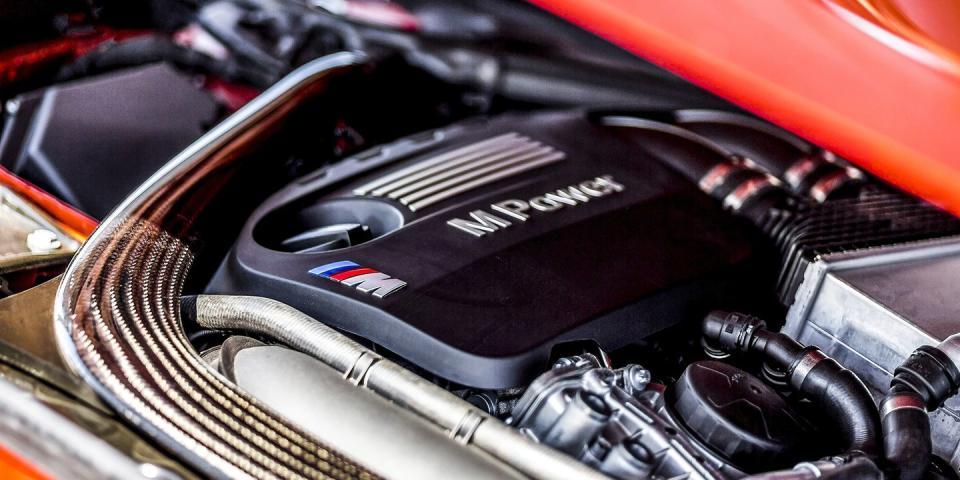
Selecting Sport Plus for steering and suspension, then pressing the Dynamic Stability Control button once for M Dynamic mode restrains the most antisocial of the I-6’s impulses, resulting in a tidy but anticlimactic 1:28.9 lap time. On a cooler day, turning DSC entirely off might let loose more power (the same way it did during our 2017 Performance Car of the Year testing of the M4 GTS) and would likely close the gap. As the thermometer at Thermal climbs toward 110 degrees, however, it’s apparent that the M2 won’t benefit from extra power. Every lap becomes what I think of as a bank-account exercise: You save tire temperature in slow corners so you can withdraw it for the fast bends.
Best to forget the timer and simply enjoy the car. The Thermal Club tracks were designed with safety as a priority, and in a gravel-lined playground like the South Palm Circuit, it’s a delight to exit corners with twin wisps of white smoke curling off the fenders, forearm locked to forearm in big but harmless moments of opposite lock. If the BMW’s brakes don’t quite inspire the same confidence as those fitted to the Camaro, and the steering feel is more PS4 than GT4, some of those deficiencies are balanced out by the widescreen visibility and peerless ergonomics.
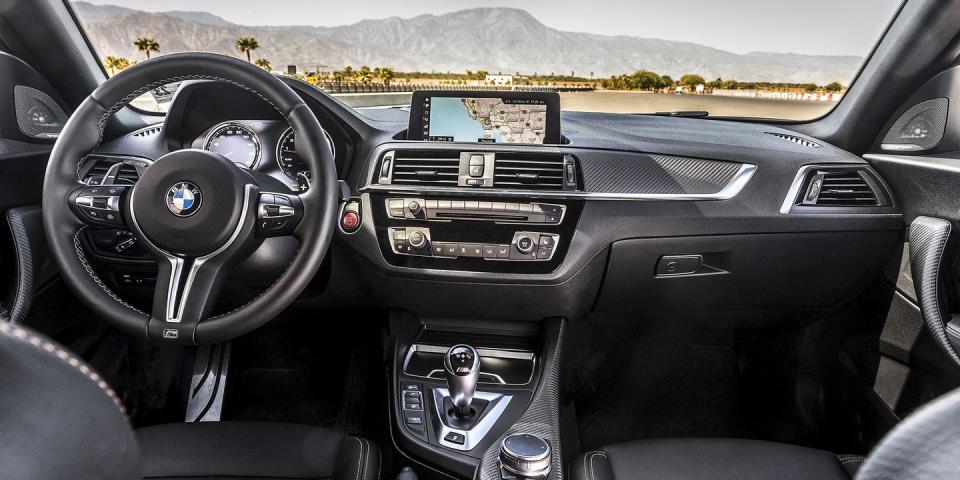
Never, not for a single moment, does the M2 Competition fail to feel special. The evidence is all around you, from the rough-finish carbon-fiber trim to the tricolor-stitched seatbelts to the stitching on the headrests. Surely some of this is due to how liberally BMW has distributed its Motorsport brand; in a world where your neighbors all have the M badge on their crossovers, this rear-drive coupe, with its unbroken lineage to the Neue Klasse, must drive the point of its purity home on all fronts. Regardless of the reason, however, the M2 serves as a study in how to make an interior luxurious and sporting without compromising on either quality.
Which, predictably, gives it the edge in the mountain two-lanes surrounding Palm Desert. Here, the instantaneity of the torque and the seamless shifts of the dual-clutch transmission translate wish into deed without hesitation. See the pass, make the pass. The pony car behind it must pause, shift, then rev. The superior visibility, too, makes a big difference when traffic occasionally comes from the opposite direction. In the mountains, the M2 feels right-sized, whereas the 1LE only truly works when you’re going fast enough to make it perform the sixth-gen Camaro trick of shrinking at speed. This is a problem, because the F1 SuperCar 3 tires are as grippy on uneven and broken pavement as they are on the peerless asphalt of Thermal.
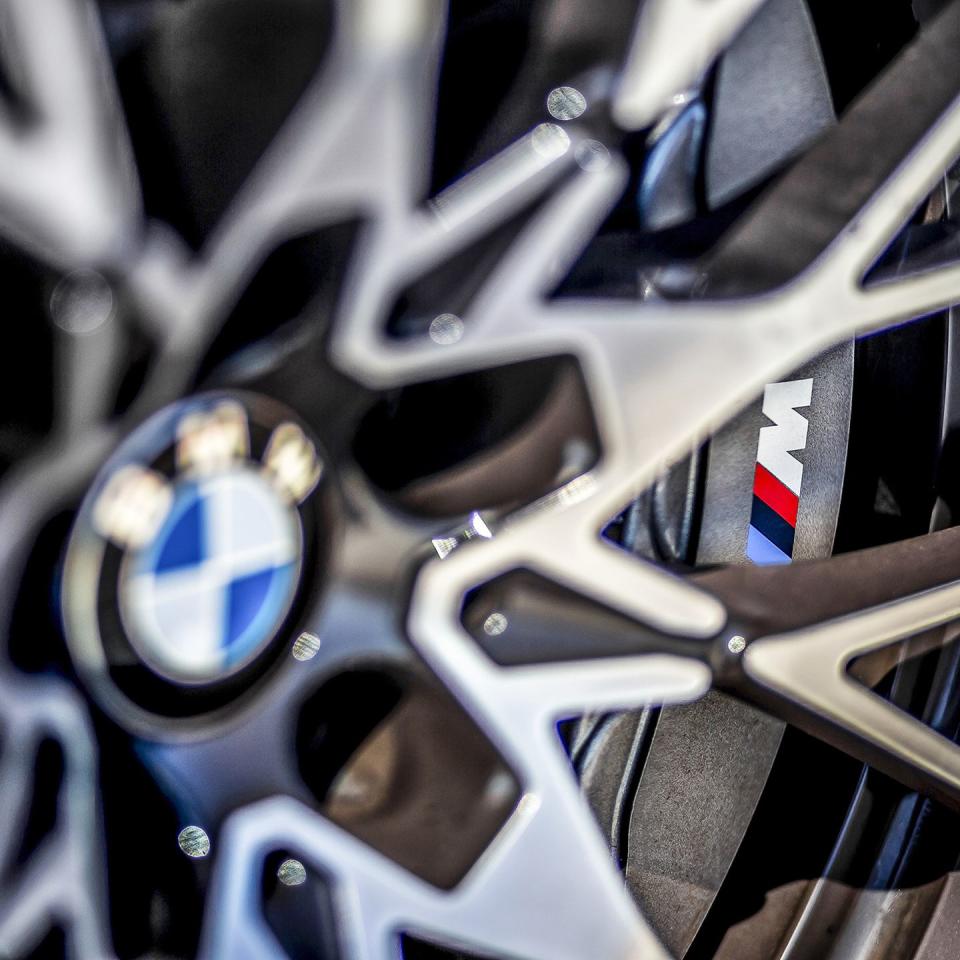
Reaching even the velvet inner edge of the Chevrolet’s limits on public roads feels uncomfortably like flying an SR-71 inside a high-school gymnasium. It does not help that while the M2 merely looks expensive, the SS 1LE looks provocative to law enforcement. The flat-black trim and the odd new grille treatment give it the distinct odor of “custom car, possibly in conflict with CARB regulations.”
About that nose, though: We love it. Not because it is handsome-it isn’t-but because it goes a long way to reduce the self-consciously retro aesthetic that has hobbled the brand for nine years now. There’s no reason the 2019 Camaro needs to look anything like the 1967 Camaro. It doesn’t need that crutch. It is outstanding and desirable on its own merits.
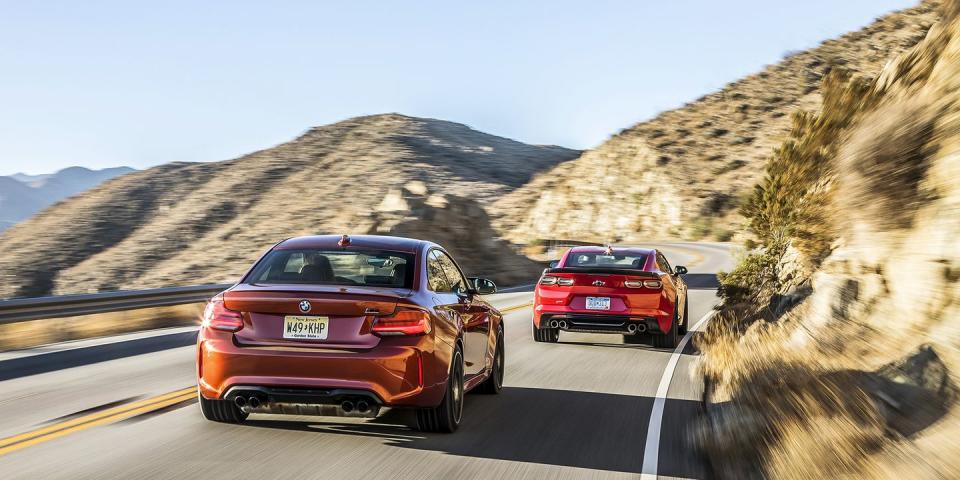
Is it as desirable as this flared-nostril M2 Competition, surely the enthusiast choice in a BMW lineup already bursting with prodigious power and carbon-fiber cred? To the track rat, yes and more. No other car at the Camaro’s $49,995 price can match it for poise and pace around a road course. It’s an E36 M3 for modern times.
The M2 Competition, by contrast, is a COPO Camaro by way of Leipzig assembly. Thomas Hobbes would recognize its core qualities: nasty, brutish, and short. To those, BMW adds a first-rate interior and a generous equipment list. All for five grand less than the price of a new M4, which is not nearly as captivating. It’s a bargain, the same way that the SS 1LE is a bargain. That can’t be a coincidence, nor is it likely to be the work of a blind watchmaker.
Maybe this isn’t evolution at work after all. Maybe it signals a resurgence, at General Motors and BMW, of something else entirely: intelligent design.
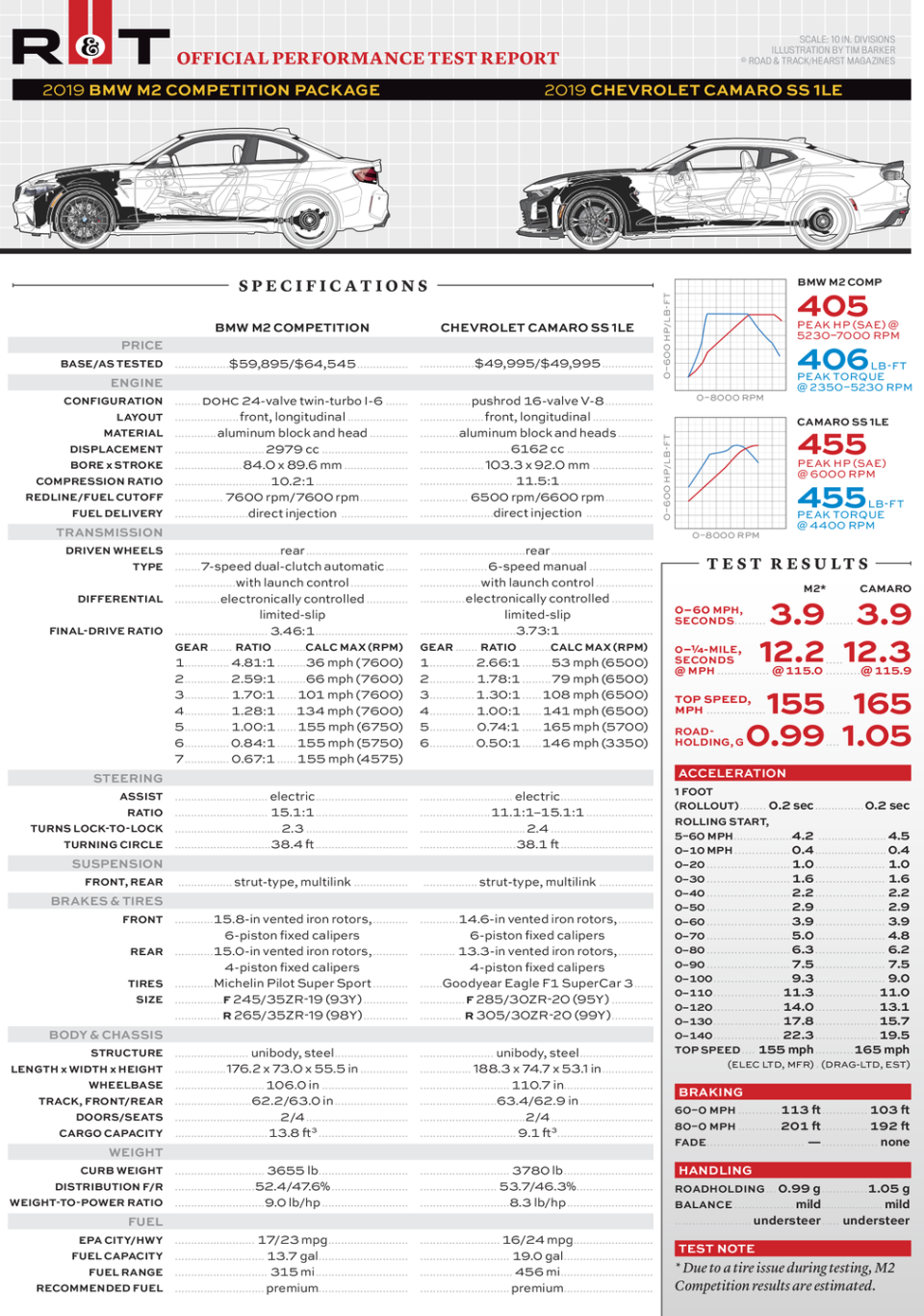
('You Might Also Like',)

 Yahoo Autos
Yahoo Autos 